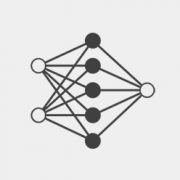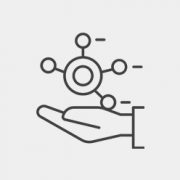In collaboration with the Ministry of Health and Family Welfare and other partners, we are currently working on a range of AI solutions to address the acute shortage of trained medical personnel and resources, and to help augment existing public health frameworks

India is making sustained progress towards its achievement of health related goals: maternal and infant mortality has been on a steady decline; significant progress has been made in reducing the number of fatalities attributed to vector-borne diseases; the National Programme for Prevention and Control of Cancer, Diabetes, Cardiovascular Diseases and Stroke (NPCDCS) is making progress on non-communicable diseases; and the National Health Authority (NHA) currently provides one of the world’s largest public health insurance programs, with the Ayushman Bharat Digital Mission leading the transition to enable digital healthcare in India.
And yet, there is a need for a more concerted programmatic effort and more innovation that is driven by advanced technology in order to achieve national healthcare targets. There is an immense potential for modern digital technology to enhance health systems all over the world, and make healthcare affordable, accessible, and equitable for all.
The Government of India has already built several digital health platforms and frameworks—the Integrated Disease Surveillance Programme (IDSP) is one example—and there is an increase in the use of electronic health records (EHR). In addition to the data being generated by existing health programs, there are other types of data sets available today that can enhance our understanding of health and healthcare, such as those routinely obtained through the telecom and finance sectors, and social media.
India is in a position to better integrate advanced technology into existing digital solutions and frameworks that provide for better disease surveillance, and to use available data in more meaningful and far-reaching ways through AI/ML innovations. The challenges associated with leveraging these digital advancements can be mitigated to a large extent by establishing AI and Innovations Units at state health directorates. These units serve to create an AI ecosystem by guiding AI-related work for all health programs, ensuring that data and systems are AI-ready, carrying out high-impact AI projects, and providing advice and expertise to evaluate AI models and programs.

Wadhwani AI is a program of the AI Unit of the Lords Education and Health Society (LEHS)
© 2025 Wadhwani AI
ROLES AND RESPONSIBILITIES
An ML Engineer at Wadhwani AI will be responsible for building robust machine learning solutions to problems of societal importance; usually under the guidance of senior ML scientists, and in collaboration with dedicated software engineers. To our partners, a Wadhwani AI solution is generally a decision making tool that requires some piece of data to engage. It will be your responsibility to ensure that the information provided using that piece of data is sound. This not only requires robust learned models, but pipelines over which those models can be built, tweaked, tested, and monitored. The following subsections provide details from the perspective of solution design:
Early stage of proof of concept (PoC)
Late PoC
This is early to mid-stage of AI product development
Post PoC
Responsibilities during production deployment
We realize this list is broad and extensive. While the ideal candidate has some exposure to each of these topics, we also envision great candidates being experts at some subset. If either of those cases happens to be you, please apply.
DESIRED QUALIFICATIONS
Master’s degree or above in a STEM field. Several years of experience getting their hands dirty applying their craft.
Programming

ROLES AND RESPONSIBILITIES
As an ML Scientist at Wadhwani AI, you will be responsible for building robust machine learning solutions to problems of societal importance, usually under the guidance of senior ML scientists. You will participate in translating a problem in the social sector to a well-defined AI problem, in the development and execution of algorithms and solutions to the problem, in the successful and scaled deployment of the AI solution, and in defining appropriate metrics to evaluate the effectiveness of the deployed solution.
In order to apply machine learning for social good, you will need to understand user challenges and their context, curate and transform data, train and validate models, run simulations, and broadly derive insights from data. In doing so, you will work in cross-functional teams spanning ML modeling, engineering, product, and domain experts. You will also interface with social sector organizations as appropriate.
REQUIREMENTS
Associate ML scientists will have a strong academic background in a quantitative field (see below) at the Bachelor’s or Master’s level, with project experience in applied machine learning. They will possess demonstrable skills in coding, data mining and analysis, and building and implementing ML or statistical models. Where needed, they will have to learn and adapt to the requirements imposed by real-life, scaled deployments.
Candidates should have excellent communication skills and a willingness to adapt to the challenges of doing applied work for social good.
DESIRED QUALIFICATIONS
